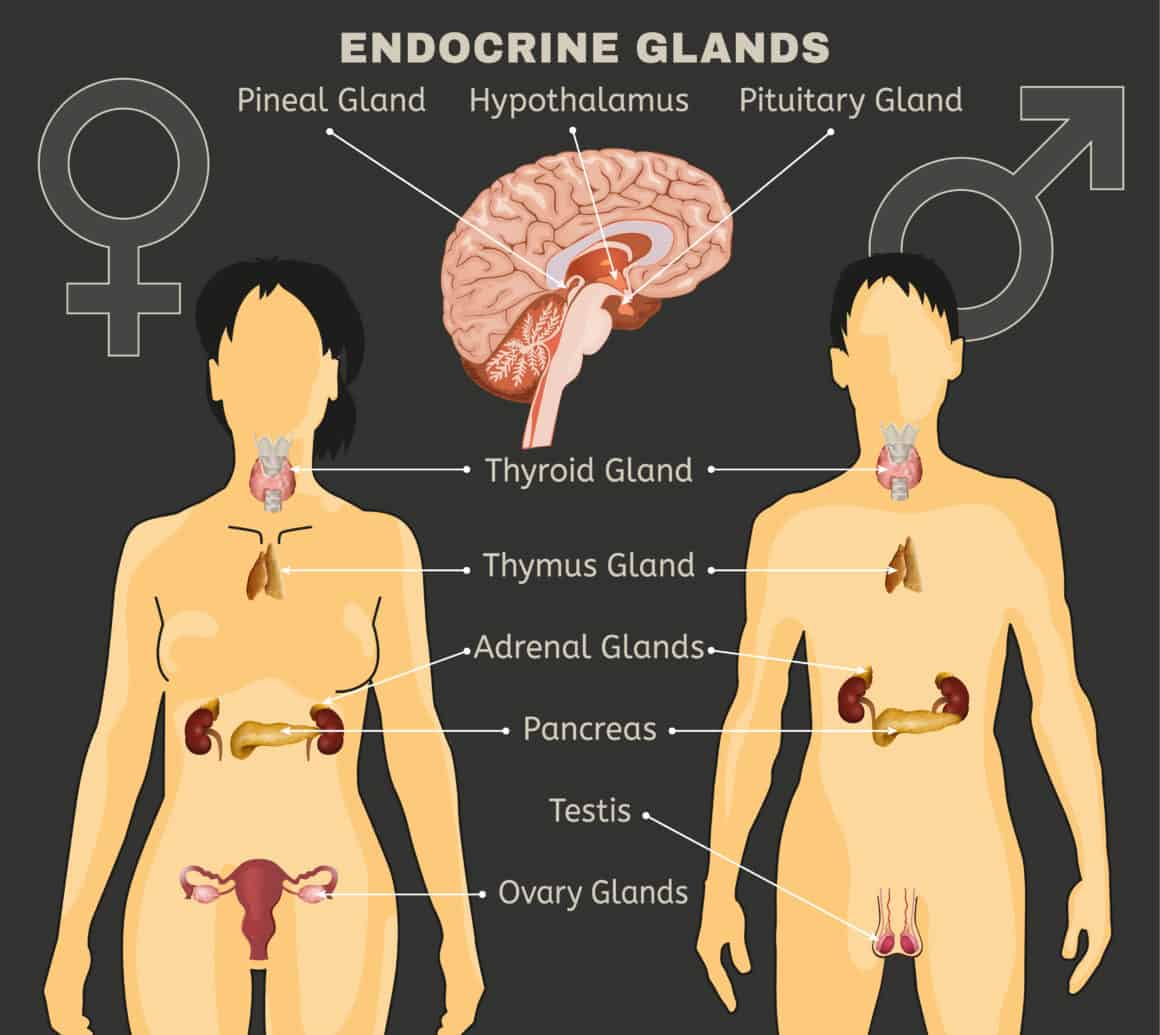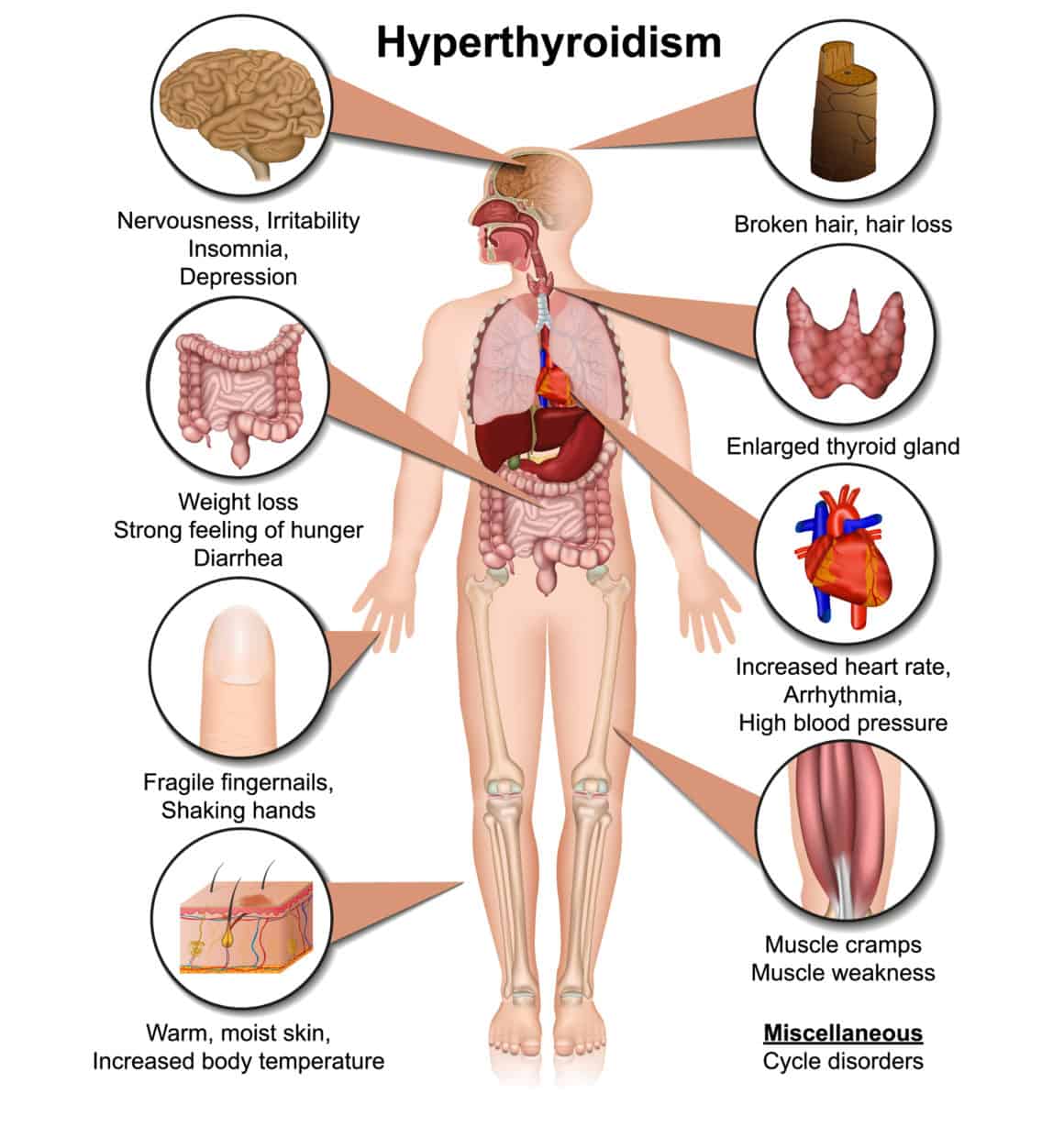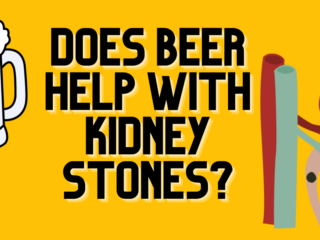Also called:
- Underactive thyroid
- Myxedema
Hypothyroidism occurs when the thyroid gland does not produce enough hormones necessary to meet all of the body’s needs. In other words, hypothyroidism is an underactive thyroid that cannot meet the body’s hormone production demands.
What is the Thyroid and What Does it Do?

The thyroid is a hormone-producing gland located in the neck, whose appearance many liken to a butterfly. This gland produces the following hormones:
- Triiodothyronine (T3)
- Thyroxine (T4)
- Calcitonin

This gland is part of the body’s endocrine system, which regulates many bodily functions through the production of certain hormones. T3 and T4 work together to help regulate bodily functions like temperature, heart rate, and metabolism. Calcitonin helps regulate blood levels of calcium and, to some extent, phosphate.

Types of Underactive Thyroid
There are several forms of this disorder, including the following:
- Primary hypothyroidism: due to a disease in the thyroid itself
- Secondary hypothyroidism: due to diseases of the pituitary gland or hypothalamus
- Subclinical hypothyroidism: not severe enough to meet diagnostic criteria
- Overt hypothyroidism: clearly diagnosable with increased levels of thyroid stimulating hormone (TSH) and decreased levels of thyroxine (T4)
- Primary congenital hypothyroidism (CH): hypothyroidism present from birth
- Acquired (autoimmune) primary hypothyroidism: primary hypothyroidism due to an autoimmune condition that harms the thyroid gland
- Central hypothyroidism: due to issues with thyroid gland stimulation
- Postpartum hypothyroidism: occurs after giving birth
Each form has its own characteristics, although they all have the same essential feature: that the thyroid is underperforming.
How Common is Hypothyroidism?
Some types of underactive thyroid conditions are more common than others are.
Subclinical
According to Physician’s Weekly, up to 10 percent of the adult population (13 million people) has this condition.
Overt
Approximately 2 percent of cisgender women and 0.2 percent of cisgender men in the U.S. who are 40 to 60 years of age have this form of underactive thyroid.
Primary congenital
In the U.S., this disorder is present in 1/3,000 to 1/4,000 births.
Acquired (autoimmune) primary hypothyroidismâ¦
This form affects approximately 3.7 percent of people in the U.S.
â¦due to Hashimoto’s disease/Hashimoto’s thyroiditis
After the age of six, this is the most common form of hypothyroidism in the U.S., which is an autoimmune disease that causes the body to attack the thyroid. In the parts of the world where iodine intake is adequate, such as the U.S., the incidence of Hashimoto’s disease is 0.8/1,000 men and 3.5/1,000 women, annually. Importantly, iodine is necessary for thyroid hormone production.
â¦due to atrophic thyroiditis
This rare condition typically affects individuals between 40 to 60 years of age. Atrophic thyroiditis represents the end stage of autoimmune hypothyroidism. Once this stage is reached, fibrosis of the thyroid gland is extensive and there is very little residual thyroid tissue remaining.
Central
This form is rare, only occurring in the general population in 1:20,000 to 1:80,000 people.
Postpartum
5 to 10 percent of cisgender women will develop postpartum hypothyroidism following pregnancy, according to the American Thyroid Association.
Hyperthyroidism vs Hypothyroidism

Hyperthyroidism, which is also referred to as overactive thyroid, occurs when the thyroid is overstimulated. This overstimulation is due to elevated levels of two key thyroid hormones, triiodothyronine (T3) and thyroxine (T4).
Hypothyroidism, which is also referred to as underactive thyroid, conversely results when the thyroid is understimulated. This understimulation occurs when there is not enough production of triiodothyronine and thyroxine.
Now, these hormones (T3 and T4) are involved in numerous bodily functions. So, when the thyroid neglects to produce an adequate amount of them, all the chemical functions within each cell begin to slow down. Conversely, higher levels mean that certain cellular and chemical activitiesâlike metabolismâcan speed up.
Disclaimer: this article does not constitute or replace medical advice. If you have an emergency or a serious medical question, please contact a medical professional or call 911 immediately. To see our full medical disclaimer, visit our Terms of Use page.








